Morane-Saulnier
M.S.406C.1
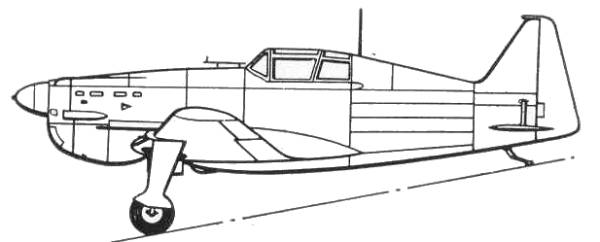
The M.S. 406, from a numerical standpoint, was the most important fighter available to the Armee de l'Air at the start of the war.. It was essentially the production version of the M.S. 405 which had been designed to meet a specification written in 1934. The M.S. 406 was a reliable aircraft with pleasant flying characteristics, but it had the misfortune to be out classed by the fighters it opposed.
The first prototype flew in August of 1935 and attained speeds of 250 mph at sea level and 298 mph at 13,120 ft. The second prototype differed from the first in having a revised wing plan form and an improved engine. The official trials with the prototypes were completed in July 1937. A pre-production batch of fifteen aircraft were ordered in August 1936. Various of these were modified in a variety of ways some of which were adapted by the final production variant. One of the interesting features of the M.S. 406 was its Plymax wing which was duralumin sheet bonded to plywood. 1,000 of the production version were ordered in March 1938.
At the beginning of the war the Armee de l'Air possessed four Escadres de Chasse (each consisting of three Groupes of twenty-five aircraft) equipped with the M.S. 406. Several foreign governments had placed orders for the fighter. The Lithuanian government ordered twelve, although these were not delivered and 45 were supplied to Turkey. The polish government ordered 160 and the first batch of fifty of these were shipped but failed to reach Poland before it collapsed. Thirteen were shipped to China but these were sequestered by the French Colonial Administration when they reached Haiphong, equipping Escadrille de Chasse 2/595 which was formed at Bach-Mai, Indochina, at the beginning of the war. Thirty M.S. 406s were ordered by Finland, these equipping the Finnish Air Forces 28th squadron. after the French collapse Finland acquired fifty-seven captured M.S. 406s from the Germans and most were re-engined by the Finnish state aircraft Factory with captured Russian 1,100 h.p. Klimov M-105P engines. So modified they were dubbed "Super Moraines". The "Super Moraines" began to reach operational squadrons in June 1944, and participated in the final stages of the Russo-Finnish conflict in Carelia.
The Kit
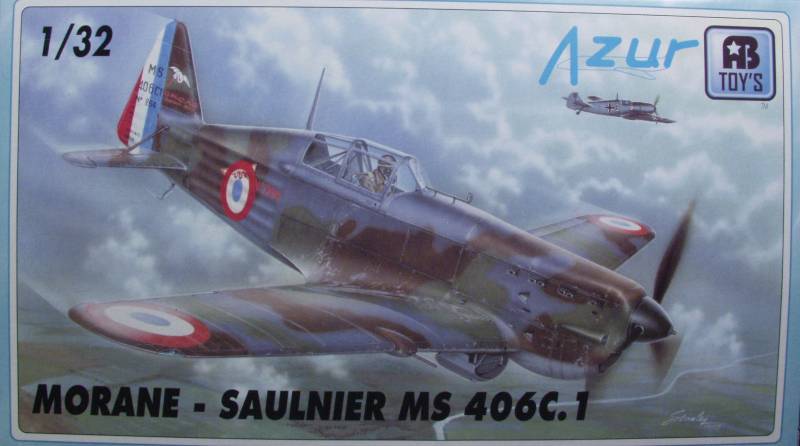
The Azur kit comes in one of those annoying and inconvienient end open boxes with nice artwork of on the top side. I'm not absolutely certain but I believe that this was the second release from Azur in this scale and as such seems to show a bit of improvement in the molding quality over the D.520, its first release. If you don't know, Azur is another name that MPM releases kits under and supposedly the design and conceptual work is done in France by folks with better resources on French WWII fighters and the kit is then tooled and molded by MPM in the Czech Republic.
Inside, the box is fairly well stuffed with all the sprues sealed in one bag. I hate when they do that ! Inside the bag was also included a small bag of resin parts and the clear parts were tossed in with the rest. There are four sprues molded in a medium gray plastic. The panel detail, where required, is rendered with recessed lines with a few recessed fasteners. Since the wing was wood skinned laminated with aluminum, there are few panel lines but there are raised ribs that I assume are stiffeners of some sort. The finish is very smooth and only a small amount of flash on the parts. Like most limited run run kits the sprue attachment points tend to be heavier than found on mass produced kits from the mainstream manufacturers. The ailerons and flaps are molded in the neutral position but the elevators and rudder are separate. None of the flight surfaces have any fabric detail so I must assume the aircraft had metal or wood skinned flight surfaces. The rear portion of the fuselage is fabric covered and the fabric detail is very restrained. Some of the smaller parts have a bit more flash on them. The gear well are closed in and exhibit a small amount of surface detail. I found no noticeable defects on any of the airframe parts.
The cockpit is very well detailed using a large number of the injected parts as well as some photo etch and resin parts. It should satisfy most modelers. The propeller uses separate blades which are keyed to provide the correct angles. The tires are not weighted but feature some nice outside hub detail. I did not find any ejector pin marks that would be seen on the completed model. I did not do a parts count. See photos below.
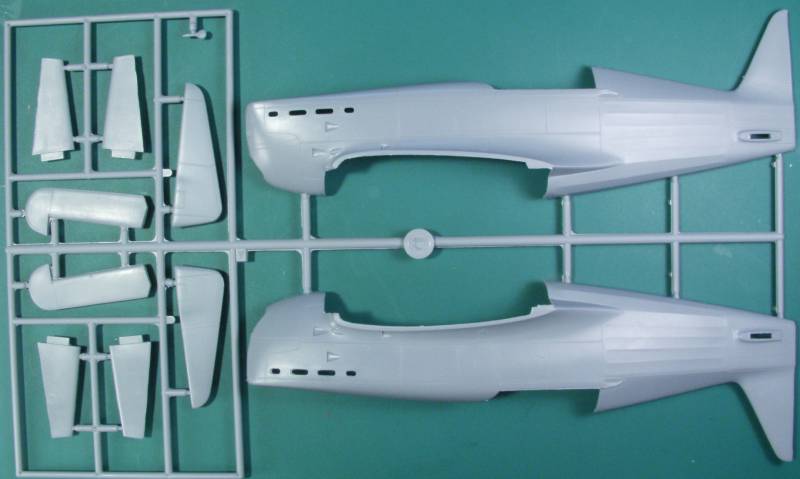
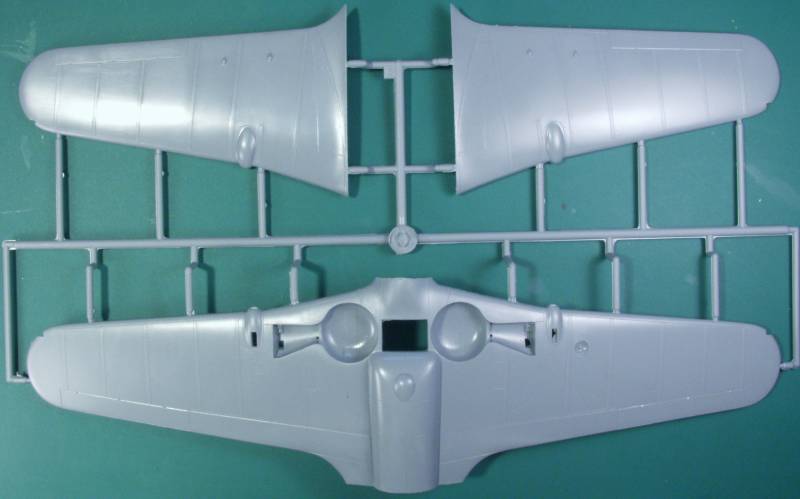
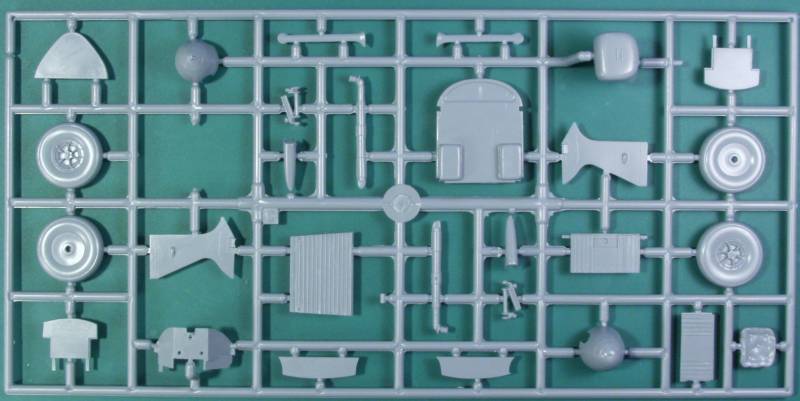
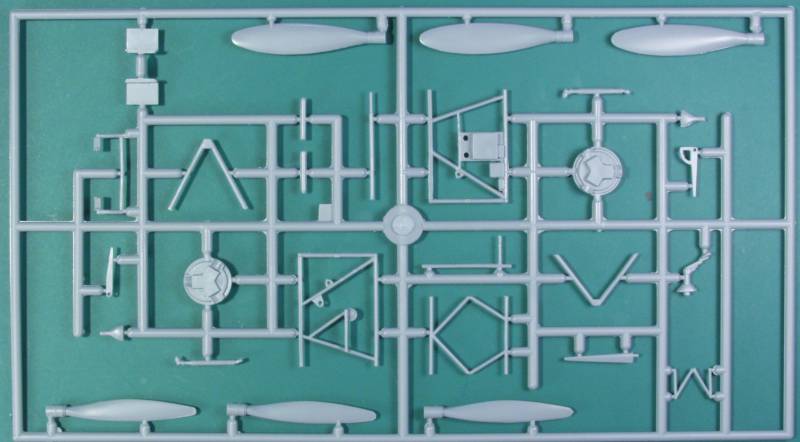
As I mentioned above the kit does include some resin parts. These are pretty well molded but have a lot of flash one them, mostly thin thankfully. Parts included are exhaust ports with hollow ports, part of the instrument panel, an armored bulkhead, a piece of interior detail, a couple landing gear retraction struts, reflector gun sight, control stick, telescopic gun sight and a fairing of some sort. All have heavy pour block to remove but are well cast and I found no pin holes or other defects. See below.
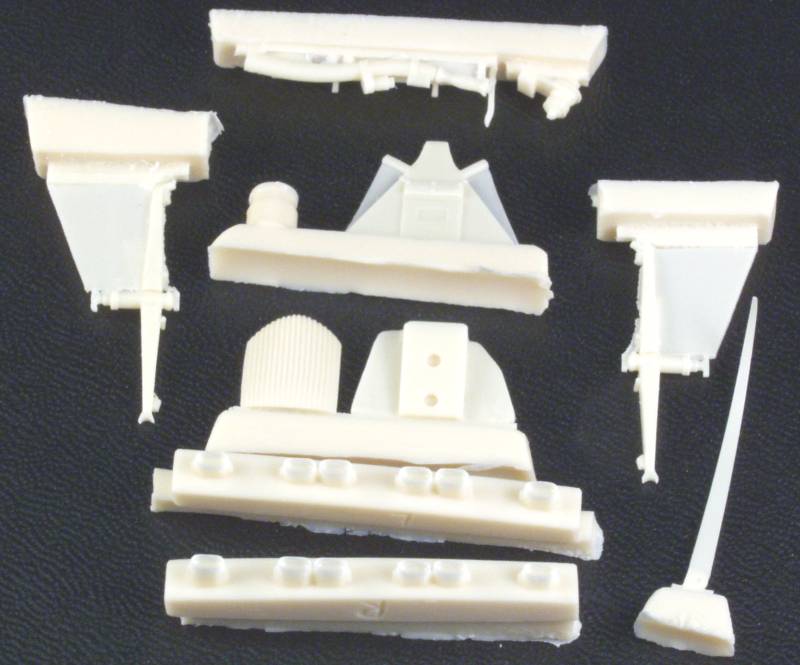
The kit also includes a photo etch fret which includes the instrument panel which utilizes film for the instrument dial, seat belt and harness, straps for the rudder bar, levers for the cockpit details, a trim wheel and a couple small screens for the front intakes. See below.
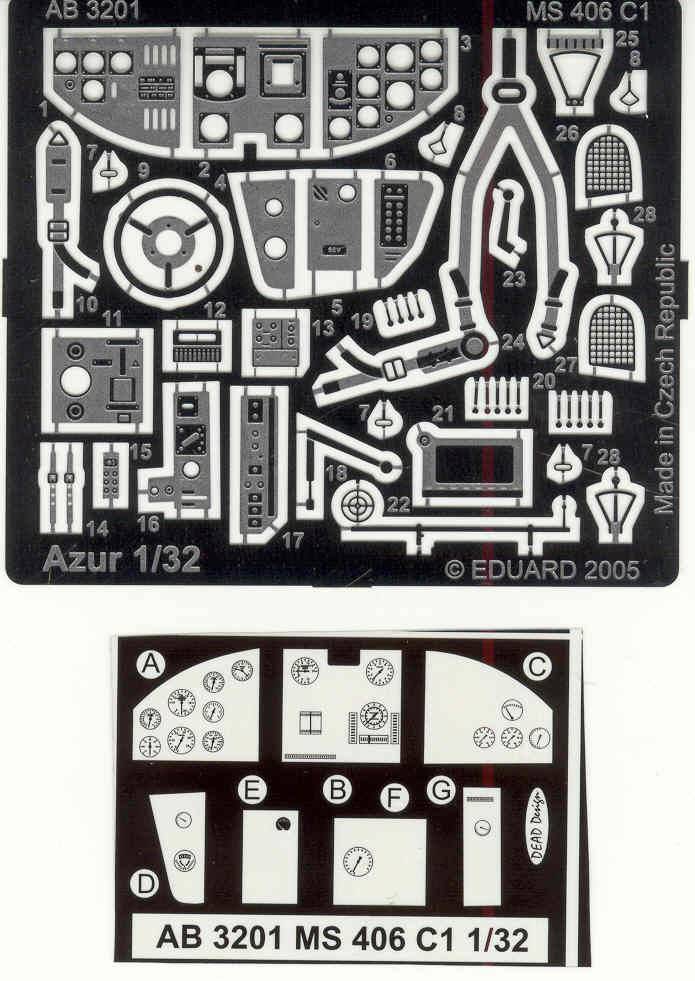
The clear parts are thin and clear and in remarkable shape considering that they were just tossed in with the rest of the parts. The windscreen had broken off the sprue but seemed no worse for the wear. The other parts included consist of a landing light lens and navagation light lenses. See below.
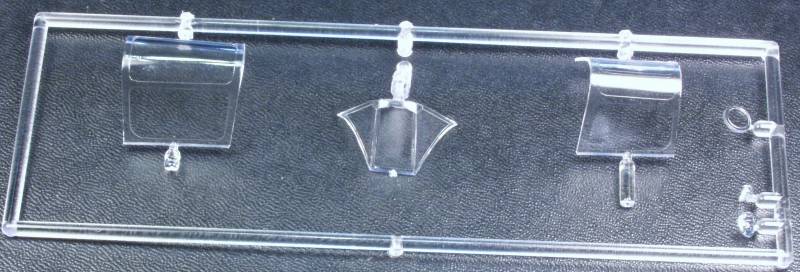
The decals were bagged sparately and not in the bag with the rest of the parts. It consists of two sheets. They are printed by Aviprint and are thin and opaque although the roundels seem to have a thin band around them that wasn't as opaque as the rest. The rudder markings are not part of the tricolored rudder decal which is nice for those who would prefer to paint the colors on the rudder rather than use the decals. The decals have a glossy finish and have little excess clear film except where necessary. The sheets have markings for two aircraft both of which have large white lettering on the bottom of the wings, hense the reason for the second sheet. See below.
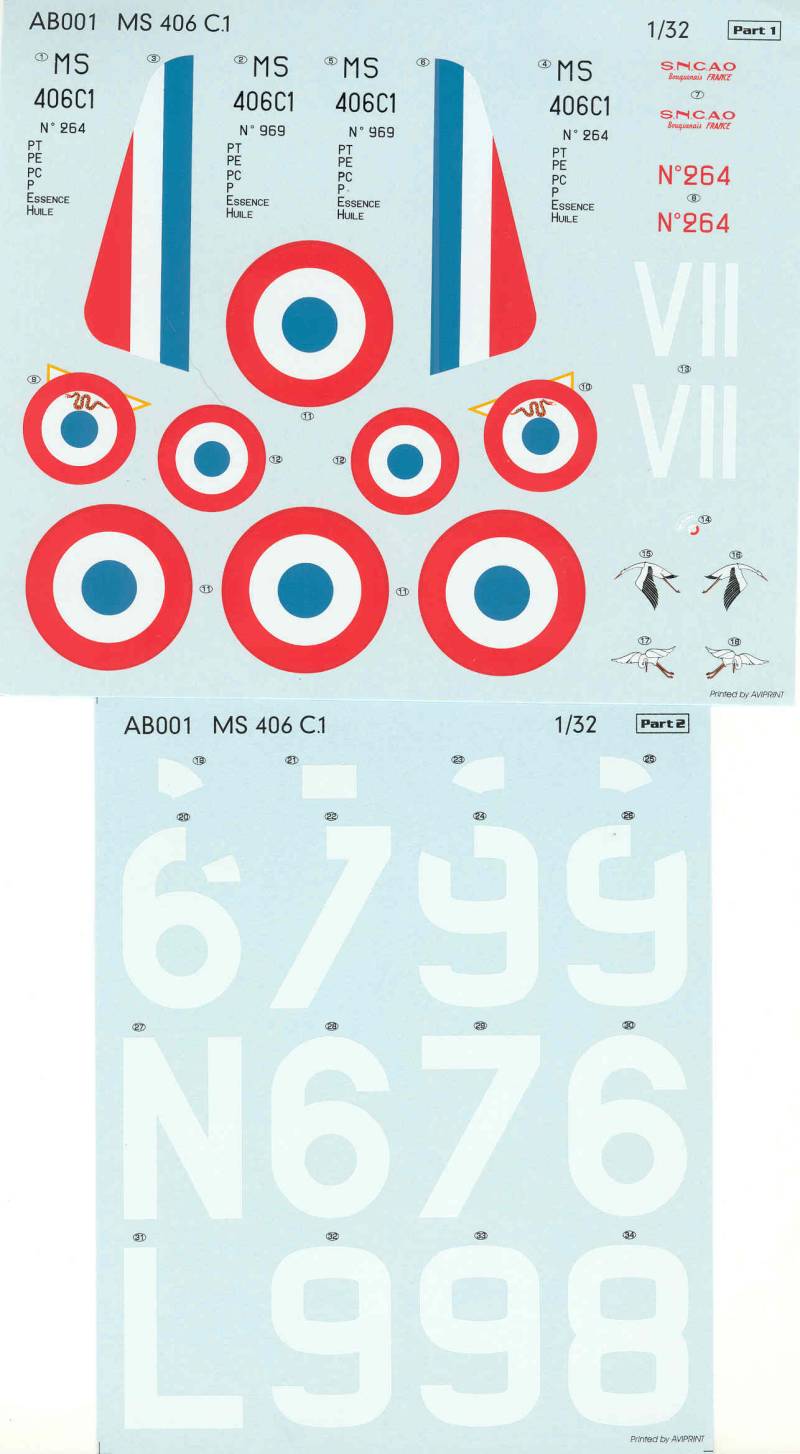
The instructions consist of several small pages folded into a booklet shape but not stapled and consists of thirteen printed panel. Panel one has history and specifications in English and Czech, the second panel is a parts map. Panels three through eleven are assembly steps which feature a couple of line drawings showing the wing dihedral and the angles of the landing gear wheels which is rather odd, angling out at the bottom. Panels twelve and thirteen are painting and marking information and the thirteenth panel is a catalog page showing other MPM kits.
After Market Goodies
None found, none really needed.
Conclusions
I really like this kit, it is very complete not requiring any after market parts and should build into a very lovely model. All the usual caveats apply concerning limited run kits and if photo etch and resin parts scare you off, maybe you should pass. Recommended for modelers withsome limited run kit experience.
Links to kit build or reviews
A build can be found here.
References
Warplanes of the Second World War, Fighters volume one by William Green.
Back to the 1/32 Scale French Aircraft page